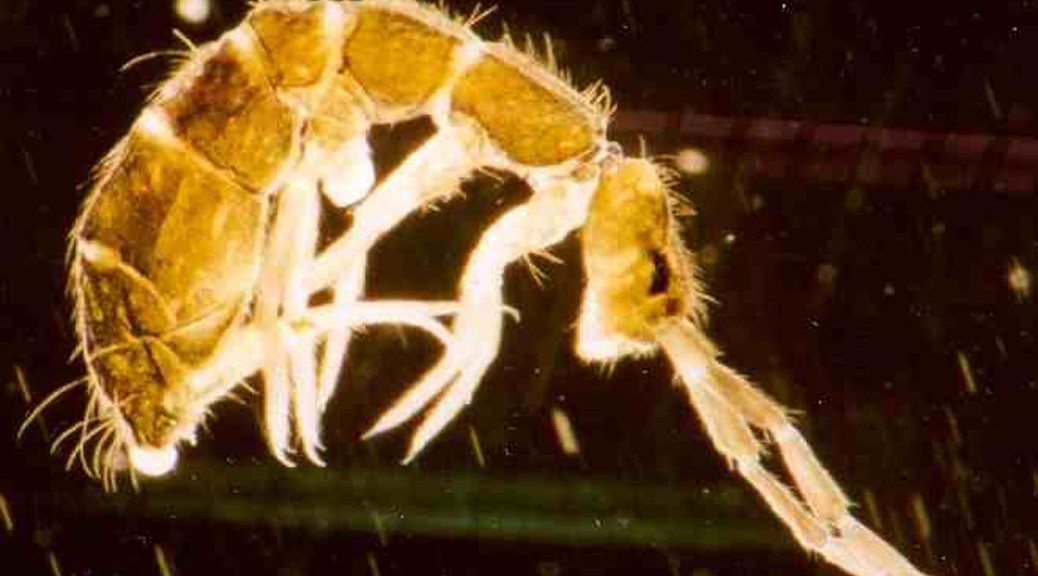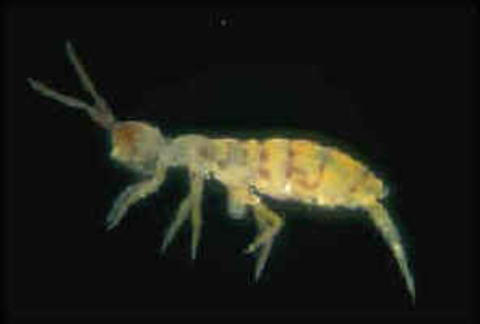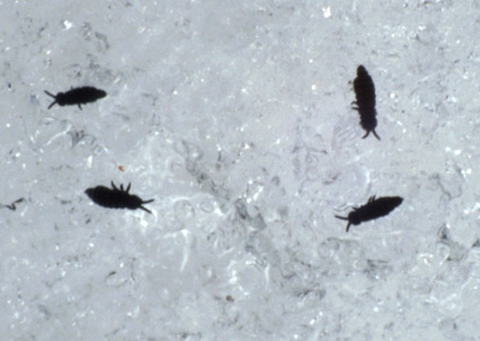Springtails are tiny, wingless arthropods that belong to the class Collembola. They are among the most abundant and diverse groups of hexapods (six-legged arthropods) on Earth. Springtails get their name from a unique structure called a “furcula” located on their abdomen, which allows them to rapidly spring away when threatened. These small creatures play important roles in various ecosystems and are typically found in soil, leaf litter, decaying organic matter, and other moist habitats.
Here are some key characteristics and facts about springtails:
- Size: Springtails are typically very small, ranging from 0.1 to 6 millimeters in length. They are often barely visible to the naked eye.
- Habitat: Springtails are found in a wide range of habitats, but they are particularly common in moist environments such as forests, grasslands, and gardens. They are also abundant in the soil and leaf litter.
- Feeding: Springtails are detritivores, meaning they primarily feed on decaying plant material and organic matter. They help in the decomposition of dead plant material and contribute to nutrient cycling in ecosystems.
- Respiration: Springtails breathe through tiny structures called “cuticular tufts” on their bodies, which allow them to exchange gases with the surrounding environment.
- Reproduction: Springtails reproduce sexually, and some species also have parthenogenetic reproduction, where females can produce offspring without mating.
- Biodiversity: There are over 7,000 known species of springtails, and many more species are believed to exist but have not yet been described by scientists. They are incredibly diverse in terms of size, color, and ecological niche.
- Ecological Significance: Springtails are important decomposers in ecosystems, helping to break down organic matter and release nutrients back into the soil. This contributes to nutrient cycling and the overall health of the ecosystem.
- Adaptations: In addition to their furcula, springtails have other unique adaptations, such as a specialized adhesive fluid that helps them cling to surfaces, as well as an elongated appendage called an “antenna” that they use for sensory perception.
How to identify springtails
Most springtails are dark-colored, brown, grey or black. Some species maybe white and some are even brightly colored.
- Usually slender, elongate insects, but there is a group that is round and stout
- Very small, between 1/16th and 1/8th inch long
- Moderate length antennae
Springtails do not have wings and cannot fly. But they can jump up to several inches using a special forked structure under the abdomen.
Springtails and fleas maybe of the same size, but have differences in their structure.
- Fleas are flattened from side to side and have very hard bodies, making them difficult to kill by crushing.
- Springtails have a more rounded, soft body and are easily crushed.
Where do you find springtails
Outdoors, springtails can be found feeding on fungi, pollen, algae, or decaying organic matter. You can find lots of springtails in mulch.
When springtails are found close to the home in high moisture conditions, they may eventually move indoors. In dry outdoor conditions, springtails may move inside to look for moisture.
Indoors
- Find springtails in areas of high moisture and condensation (around plumbing leaks in bathrooms, basements, and kitchens).
- Springtails are commonly found in the soil of overwatered houseplants.
- They prefer soil that is excessively damp or soil mixes that contain a high percentage of peat.
Springtails in winter
Snowflea (Hypogastruna nivicola) is a springtail species that is active during winter and seen on snow.
Snowfleas are harmless springtails that become active as soon as the ground begins to thaw in late winter or very early spring.
They are generally found in groups and their dark colored bodies are easily noticed against white snow.
How to manage springtails
When you see large numbers of springtails, it means there is a high moisture problem. Springtails are generally a temporary problem and die when moisture levels are reduced.
Check inside and outside of the house for moisture problems
Moisture-causing issues:
-
Rainspouts that do not carry water far enough away from the foundation.
-
Landscapes that slope towards buildings.
-
Excessive irrigation.
-
Non-functioning drainage systems around the building.
If you see small numbers of springtails, ignore them or physically remove them by hand or with a vacuum. For larger infestations:
-
Dry out wet areas with a fan or dehumidifier.
-
Remove wet wood, especially if it is moldy.
-
Make structural changes to correct moisture problems.
-
Remove or reduce the amount of mulch around the foundation of your home.
If you have a problem with springtails in houseplants, let the soil dry out and water less frequently but more deeply.
Pesticides are not effective against springtails and should not be used.








